Foreign Medical Graduates (FMGs) have a different path to practicing medicine in the United States than those who were trained in-country. This path is different because it is an attempt at discerning quality education at foreign medical schools. It isn’t that foreign medical schools aren’t as good as American medical schools, but not all medical schools adhere to U.S. standards or higher. The different path FMGs must travel ensures that all physicians practicing in the U.S. have met or exceeded U.S. standards.
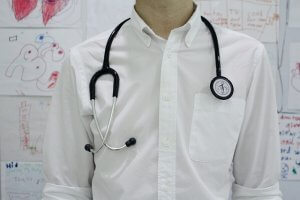
The ECFMG
The Educational Commission for Foreign Medical Graduates (ECFMG) is the certifying organization that confirms FMGs are ready to take part in a U.S. residency that is accredited. In order to practice medicine autonomously, FMGs will have to complete a three-year (or more) residency in the U.S. no matter what type of training they received abroad.
The ECFMG makes sure that your medical school is on its World Directory of approved medical schools. It also serves in assisting FMGs with visa applications and licensing examinations. It is a FMG’s first line of support in becoming a practicing physician in the U.S.
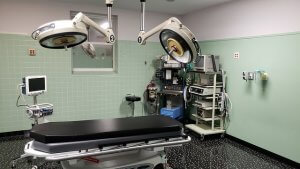
USMLE
The United States Medical Licensing Examination (USMLE) is broken into three parts. Step 1 and Step 2 (CK) cover clinical knowledge, and Step 2 (CS) covers clinical skills. Finally, step 3 is the final exam that covers knowledge and skill combined. In order to get ECFMG certification, FMGs must pass steps 1 and 2. In order to qualify to take Step 3, an FMG must have ECFMG certification.
Visas
The J-1 visa is the most common visa used by FMGs to get into residency programs. The ECFMG sponsors physicians with this visa. A FMG must have passed step 1 and 2 of the USMLE in order to apply along with having ECFMG certification. An official letter must be held from a Graduate Medical Education or training program, and the Ministry of Health at the last country of permanent residence must provide a statement of need.
Once the requirements are met for a J-1 visa, the FMG is free to complete a residency program once he or she is Matched. Then, he or she must return to the home country for 2 years before being eligible to return. This ensures that low-income countries do not suffer “brain drain” where physicians leave to obtain premium knowledge but never bring that knowledge and expertise back home.
There are exceptions to the 2 year at-home requirement if there is probably danger or persecution that the FMG will face if returning home. It can also be dropped if it would cause a hardship to a spouse or children. Lastly, there are exceptions available for those who an Interested Governmental Agency has taken interest (i.e. Department of Health and Human Services).
The Match
The National Resident Matching Program (NRMP) is how most residency candidates are matched to a residency program, and the application for the Match is called the Electronic Residency Application Service (ERAS). In order to get into the ERAS program, you must get a token from the ECFMG.
Once you have applied through ERAS, the Match process begins. This includes you evaluating all of the residency programs you are interested in and getting interviews to bolster your chances of matching into a residency program. You make a rank order list with all of your top picks (strategically chosen to increase you chance of acceptance in a program you like). The program directors also make a rank order list. Using algorithms meant to create best-fit matches with residencies and applicants, applicants are matched.
Physician Shortage
FMGs do not match as frequently as U.S.-trained medical graduates. This happens for many reasons, but it is a reality that FMGs face. Fortunately, the U.S. is realizing the severe physician shortage they are facing with people living longer and developing more chronic conditions. This has created a call for more residency slots to be available. This takes money, so it is a battle, but it is one where FMGs are seeing progress.
Networking is Key to Practicing in the U.S.
Throughout the struggle that FMGs have getting into a residency and then practicing medicine, there is one thing that helps, and that is networking. The biggest challenge for FMGs is that nobody knows them, and program directors are unfamiliar with the details of their education. That is why any U.S. experience (i.e. externships, observerships) is essential to success.
FMGs who work closely with medical facilities, especially those where the residency is, have local letters of recommendation. Medical providers have first-hand knowledge of their ability, and program directors can speak to people who know that the FMG is comfortable and good at working in the U.S. healthcare system. Without networking, there is less of a chance of being recognized during the Match, which is potentially the most important part of the path to practice for Foreign Medical Graduates.
 In the United States, there is a dominate culture that is Christian and Caucasian. While this culture greatly influences our government and healthcare systems, America has always been a “melting pot” consisting of natives and immigrants with religious freedom and a multitude of skin colors. In fact, the dominant culture in the U.S. came from migrant populations, but their conquering history created a long-lasting power struggle between different races.
In the United States, there is a dominate culture that is Christian and Caucasian. While this culture greatly influences our government and healthcare systems, America has always been a “melting pot” consisting of natives and immigrants with religious freedom and a multitude of skin colors. In fact, the dominant culture in the U.S. came from migrant populations, but their conquering history created a long-lasting power struggle between different races. If it doesn’t make sense how simply being from a different country could bring cultural confidence, consider the United States law enforcement or government system. In these systems, the minority races they serve feel underrepresented and therefore feel as though they have no voice. As these societal systems become more diverse, you see a decrease in disparities and more comfort with the impositions that result from these systems. It is not that a police officer should not have white skin. It is simply that having a diverse force implies that there is no bias. It is not that government should include every race, but making sure it includes multiple races without discrimination is essential to show equality among all races.
If it doesn’t make sense how simply being from a different country could bring cultural confidence, consider the United States law enforcement or government system. In these systems, the minority races they serve feel underrepresented and therefore feel as though they have no voice. As these societal systems become more diverse, you see a decrease in disparities and more comfort with the impositions that result from these systems. It is not that a police officer should not have white skin. It is simply that having a diverse force implies that there is no bias. It is not that government should include every race, but making sure it includes multiple races without discrimination is essential to show equality among all races.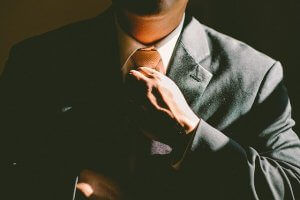

 One of the bizarre things about brain waste is that the victim of brain waste is not just the foreigner who cannot use his or her medical training. It also cost the state and the country in tax revenues that could be obtained by higher income earners. According to
One of the bizarre things about brain waste is that the victim of brain waste is not just the foreigner who cannot use his or her medical training. It also cost the state and the country in tax revenues that could be obtained by higher income earners. According to  In the U.S., there are many inequities, and foreign populations sometimes suffer disparities because of efforts to improve quality that have collateral damages or consequences. Obviously, this does not mean all hope is lost, or you wouldn’t be here. Just make sure that if you don’t match into a residency that you are engaging in behaviors that will improve your odds next time. Unfortunately, this may involve some brain waste in order to survive financially, but make sure it also includes further efforts to get involved in the medical community in which you desire in your future.
In the U.S., there are many inequities, and foreign populations sometimes suffer disparities because of efforts to improve quality that have collateral damages or consequences. Obviously, this does not mean all hope is lost, or you wouldn’t be here. Just make sure that if you don’t match into a residency that you are engaging in behaviors that will improve your odds next time. Unfortunately, this may involve some brain waste in order to survive financially, but make sure it also includes further efforts to get involved in the medical community in which you desire in your future.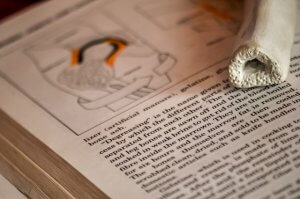 A medical school does not necessarily have to meet every standard in order to be included on the World Directory, but the WFME uses these standards as a guide to evaluating the program. The WFME admits that these standards must be applied differently in different locations according to a “local context.” It also recognizes the overall aim of standardization in a world that is increasingly globalized or international.
A medical school does not necessarily have to meet every standard in order to be included on the World Directory, but the WFME uses these standards as a guide to evaluating the program. The WFME admits that these standards must be applied differently in different locations according to a “local context.” It also recognizes the overall aim of standardization in a world that is increasingly globalized or international. If you ask program directors, they will likely tell you this is not the case. In fact, program directors are fully aware of the crucial role IMGs play in filling the growing physician gap that strains the U.S. healthcare system. Still, the statistics show that IMGs still struggle to get into residency slots.
If you ask program directors, they will likely tell you this is not the case. In fact, program directors are fully aware of the crucial role IMGs play in filling the growing physician gap that strains the U.S. healthcare system. Still, the statistics show that IMGs still struggle to get into residency slots. A ROL is a list created in the National Resident Matching Program (NRMP)’s registration system. The list is intended to allow you to rank the programs in which you’d like to attend. It also gives residency program directors a chance to rank their applicants in the order of preference of whom they’d like to train. The idea is that residency programs and applicants are matched based on who will be a best fit.
A ROL is a list created in the National Resident Matching Program (NRMP)’s registration system. The list is intended to allow you to rank the programs in which you’d like to attend. It also gives residency program directors a chance to rank their applicants in the order of preference of whom they’d like to train. The idea is that residency programs and applicants are matched based on who will be a best fit. There are varying opinions on whether or not you should flood your ROL with as many residency choices as possible. You can rank 100 programs without any additional fees and up to 300 with additional fees (up to $30 per program). As an International Medical Graduate (IMG), it is true that you are at a disadvantage statistically speaking, so it may be worth it to include more choices on your list. However, you also want to be thoughtful in your choices. Your residency is a huge step in your career path, and you want it to be the right step. Here are some tips:
There are varying opinions on whether or not you should flood your ROL with as many residency choices as possible. You can rank 100 programs without any additional fees and up to 300 with additional fees (up to $30 per program). As an International Medical Graduate (IMG), it is true that you are at a disadvantage statistically speaking, so it may be worth it to include more choices on your list. However, you also want to be thoughtful in your choices. Your residency is a huge step in your career path, and you want it to be the right step. Here are some tips: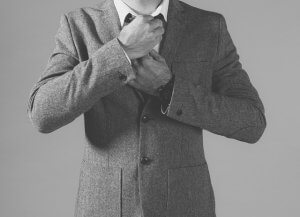 Standing and sitting with good posture also reflects confidence. Cowering in the face of judgement in front of interviewers shows that you are not confident in your skills, and you must exude confidence in your posture both in front of your interviewers in your patients. Practice holding your head up high, and make it a habit to hold your shoulders back. It will become natural, and you won’t feel odd doing it during your interview.
Standing and sitting with good posture also reflects confidence. Cowering in the face of judgement in front of interviewers shows that you are not confident in your skills, and you must exude confidence in your posture both in front of your interviewers in your patients. Practice holding your head up high, and make it a habit to hold your shoulders back. It will become natural, and you won’t feel odd doing it during your interview. In America, everyone appreciates a firm handshake. This doesn’t mean it is a power struggle between you and the recipient. Rather, a limp handshake feels wrong and weird. Too strong of a handshake feels like you are insecure. Firmness should be warm and indicative of your earnestness.
In America, everyone appreciates a firm handshake. This doesn’t mean it is a power struggle between you and the recipient. Rather, a limp handshake feels wrong and weird. Too strong of a handshake feels like you are insecure. Firmness should be warm and indicative of your earnestness.

 There are multiple ways to waive the two-year home country requirement. The government of the home country can release a no objection statement (NOS). The requirement can also be waived if it would cause exceptional hardship to a U.S. citizen or legal resident. If the person would be persecuted in his or her home country, it may be waived. The U.S. government can also waive the visa requirement if it would harm the intent of the person’s project or agency’s interest. Lastly, the Conrad 30 waiver program allows physicians to stay if they will fulfill the needs of the American healthcare system in rural or underserved areas.
There are multiple ways to waive the two-year home country requirement. The government of the home country can release a no objection statement (NOS). The requirement can also be waived if it would cause exceptional hardship to a U.S. citizen or legal resident. If the person would be persecuted in his or her home country, it may be waived. The U.S. government can also waive the visa requirement if it would harm the intent of the person’s project or agency’s interest. Lastly, the Conrad 30 waiver program allows physicians to stay if they will fulfill the needs of the American healthcare system in rural or underserved areas. The American Academy of Medical Colleges predicts a shortage of 122,000 doctors by 2032. Demand for medical care is exceeding supply, which could result in catastrophic delays in care and negative health outcomes. Because the population is living longer, the number of patients needing care is growing. By 2032, the number of people living over age 65 is expected to increase by 48 percent. Additionally, elderly populations often have co-morbidities that require multi-disciplinary teams. On the one hand, people living longer is a great thing. However, they still need medical care. The doctors are also aging. According to the
The American Academy of Medical Colleges predicts a shortage of 122,000 doctors by 2032. Demand for medical care is exceeding supply, which could result in catastrophic delays in care and negative health outcomes. Because the population is living longer, the number of patients needing care is growing. By 2032, the number of people living over age 65 is expected to increase by 48 percent. Additionally, elderly populations often have co-morbidities that require multi-disciplinary teams. On the one hand, people living longer is a great thing. However, they still need medical care. The doctors are also aging. According to the  Go out for coffee
Go out for coffee



